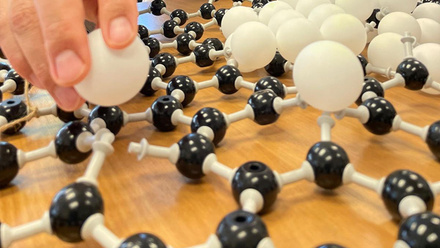Cotton on to a fire-resistant fabric
A chemical process can make cotton fire-resistant, while retaining its skin-friendly properties, potentially creating a more comfortable alternative for firefighters and other emergency services, researchers say.

Formaldehyde – a hazardous carcinogen for textile manufacturing – has previously been one of the only viable treatments for fireproof cotton clothing. Although formaldehyde-based flame retardant treatments are sturdy, they chemically obstruct the -OH groups of cellulose, decreasing cotton’s capability to absorb water and resulting in a textile that is not comfortable to wear.
However, researchers at The Swiss Federal Laboratories for Materials Science and Technology (Empa) have avoided using formaldehyde by creating a physically and chemically independent network of flame retardants inside the fibres. A tri-functional phosphorous compound (trivinylphosphine oxide), which has the capability of reacting only with specifically added molecules, i.e. nitrogen compounds like piperazin, has been added to form its own network inside cotton.
‘The treatment consists of two monomers. And these monomers react preferably with each other and they form a physical network inside the cellulose,’ explains Sabyasachi Gaan, Chemist at Empa. ‘One of them is a phosphorus-containing component and the other one is a nitrogen-containing component. Then you link them together, and they start to react when you do the cross-linking process. And in our case, a crosslink is accelerated when you use steam.’
He continues, ‘In most cases, when you do formaldehyde-based treatment, the formaldehyde itself reacts with cellulose and the cellulose has a lot of hydroxyl groups, which makes it hydrophilic.
‘Our treatment is not only formaldehyde-free, it doesn't touch or alter the properties of cellulose. But it is also versatile and suitable for antimicrobial treatment as well.’
Moreover, the physical phosphine oxide network is also fond of water. The team reports that the phosphine oxide networks formed do not wash out – after 50 washes, 95% of the flame retardant network is still present in the fabric.
According to Gaan, using trifunctional monomers is necessary to make cotton permanently fire-resistant without blocking the favourable -OH groups. ‘By using just bifunctional monomers, you’d end up getting a linear chain and that would not be waterproof. But if you have a network structure which is 3D, you need to have a monomer which has three functional groups – trifunctional monomer.’
To render additional protective functionalities to the textile developed at Empa, the researchers also incorporate in situ generated silver nanoparticles into the fabric in a one-step process alongide growth of the phosphine oxide networks. Silver nanoparticles provide the fibre with antimicrobial properties and also survive 50 laundry cycles in testing.
‘We added silver precursors in the treatment containing these monomers and then fix it using this crosslinking process,’ explains Gaan. ‘Nanosilvers were formed inside the cellulose.’
To introduce the modified material on an industrial scale, ‘two important hurdles remain’, Gaan concludes. ‘For future commer-cialisation we need to find a suitable chemical manufacturer who can produce and supply trivinylphosphine oxide. In addition, trivinylphosphine oxide has to be REACH-registered in Europe.''







